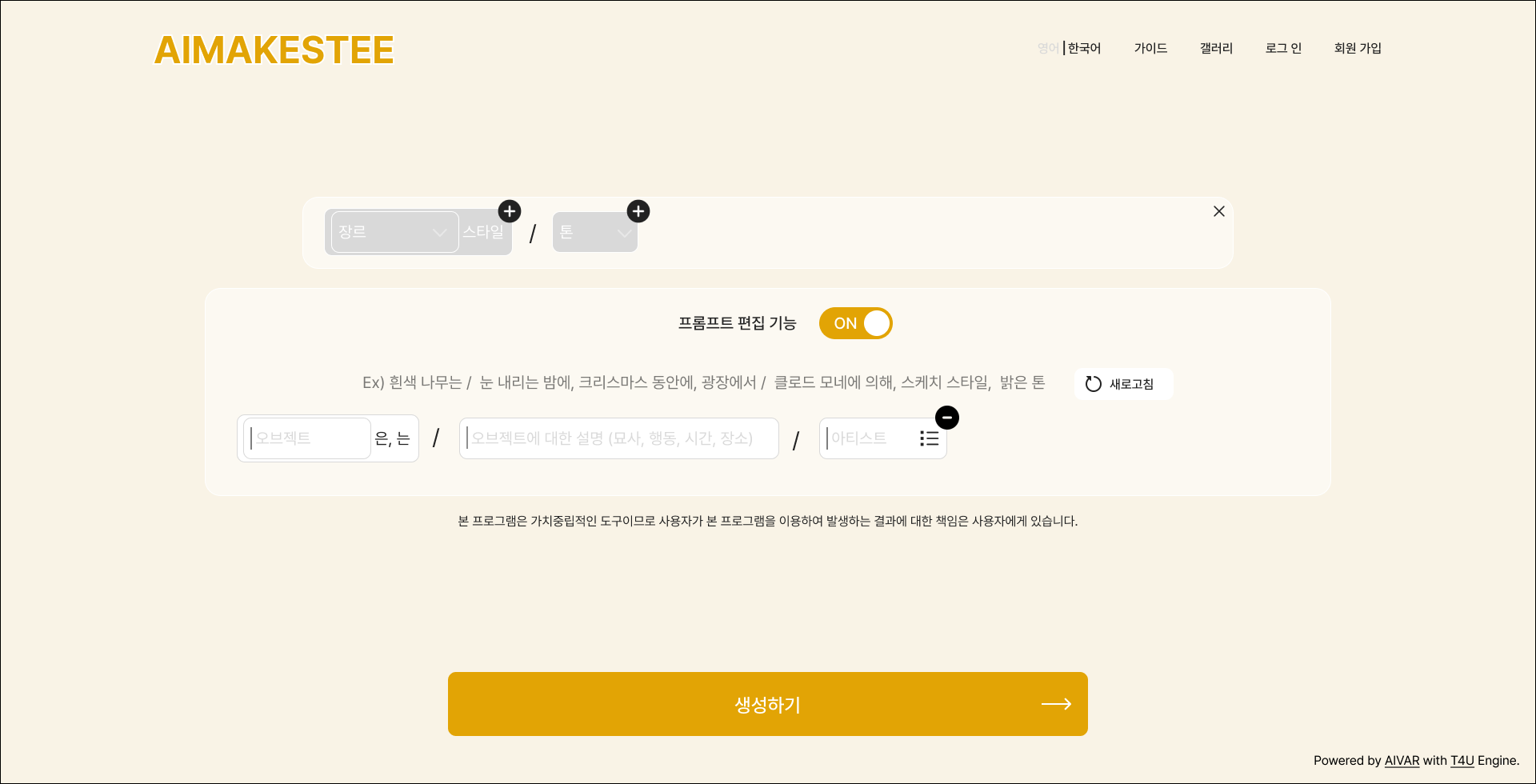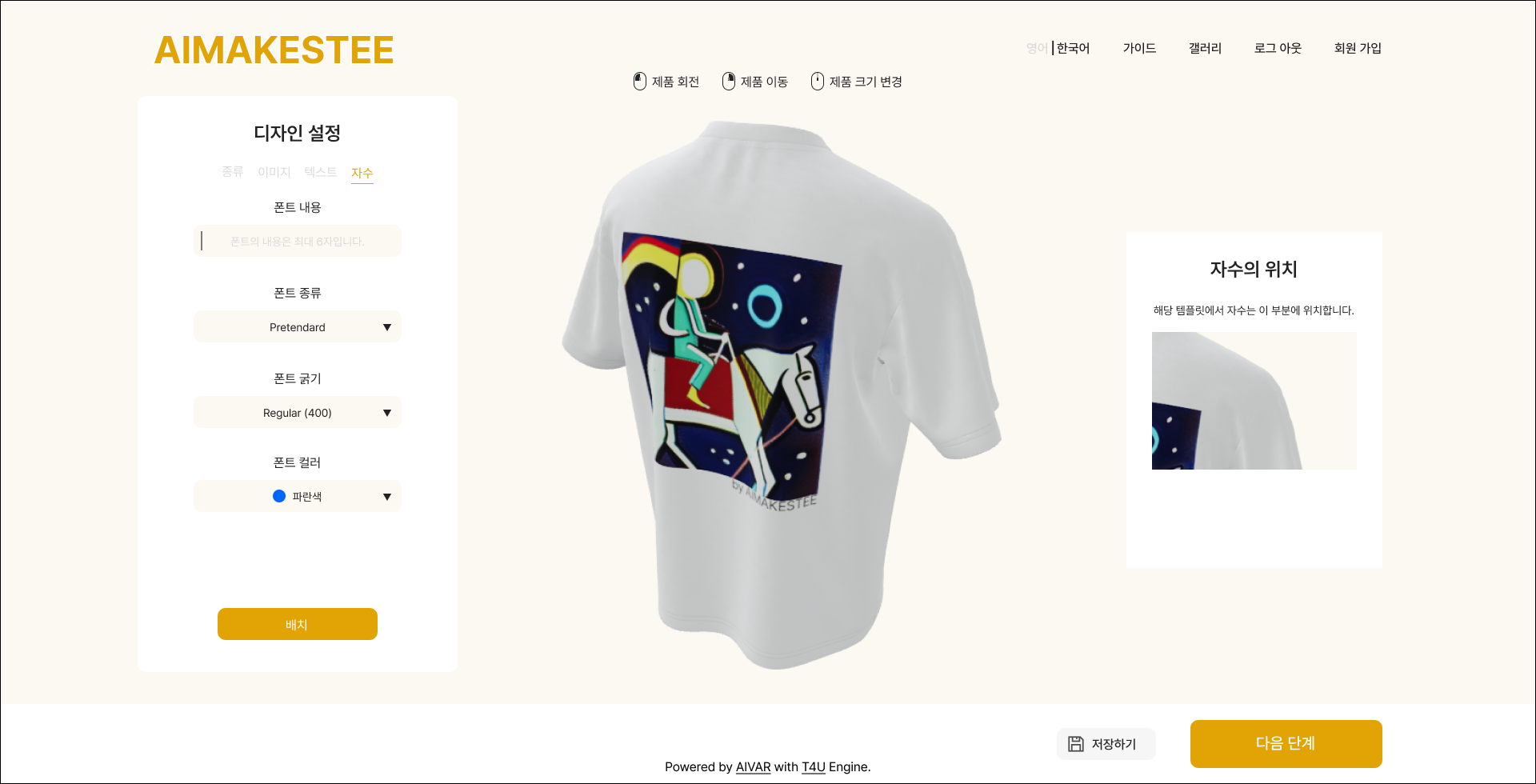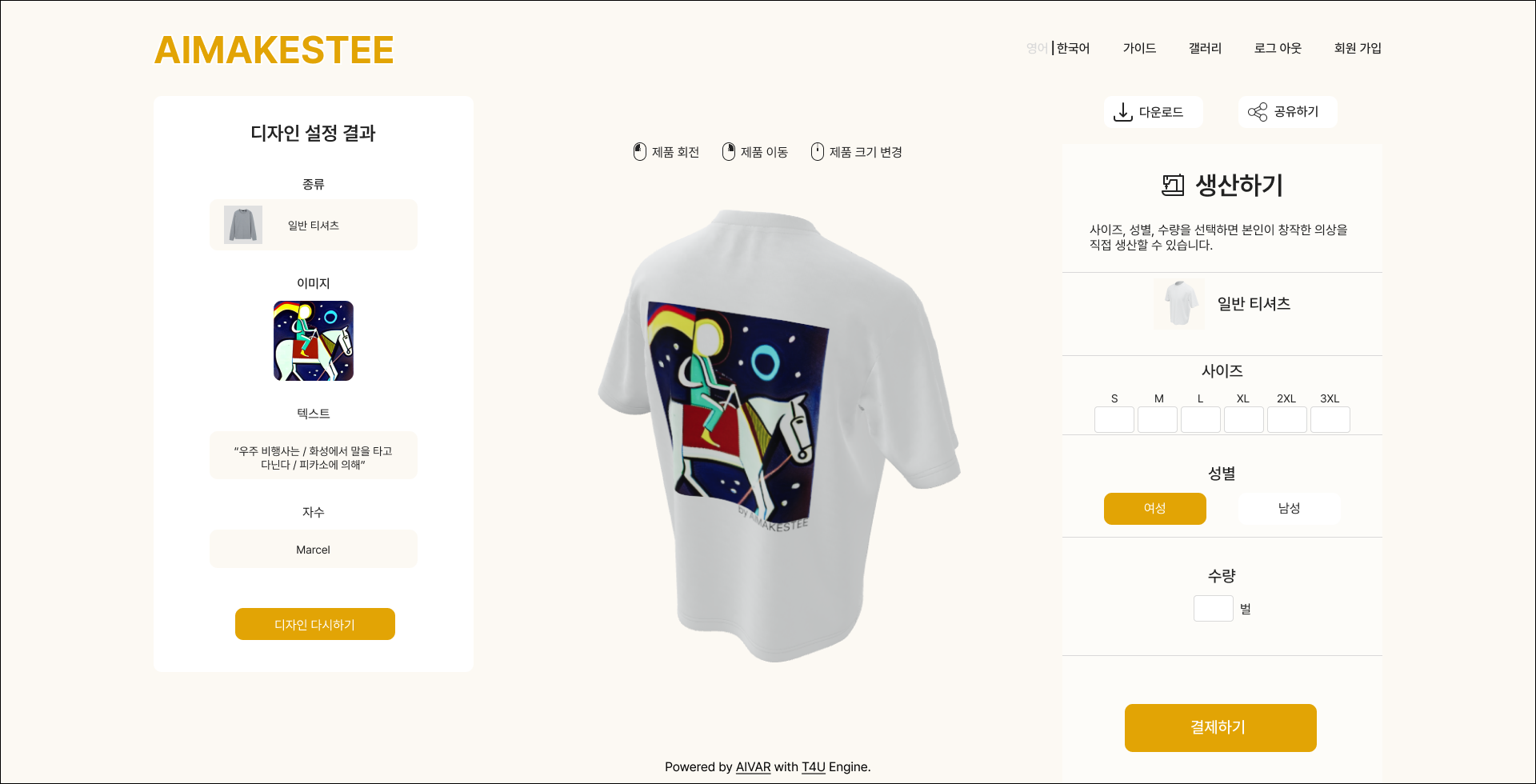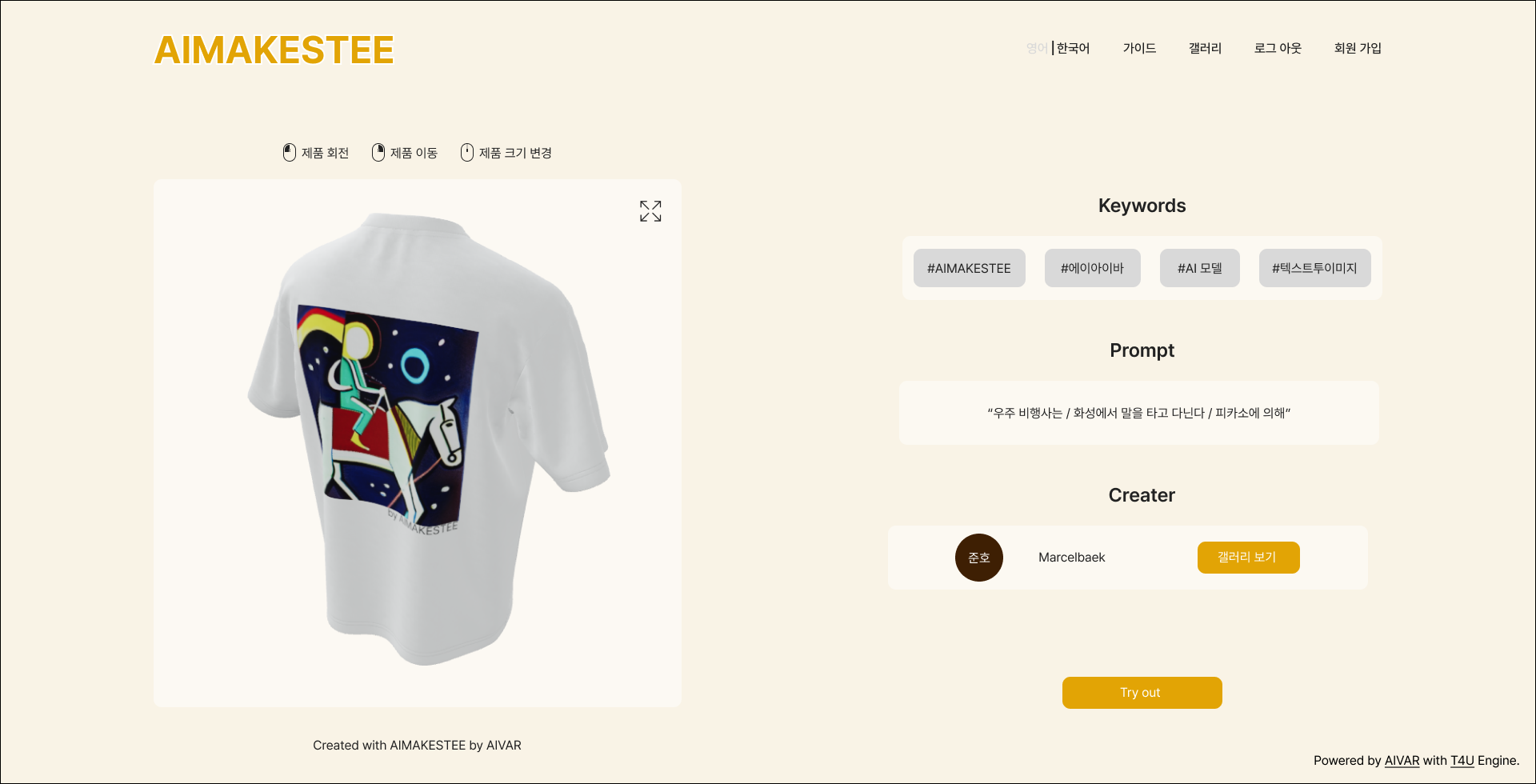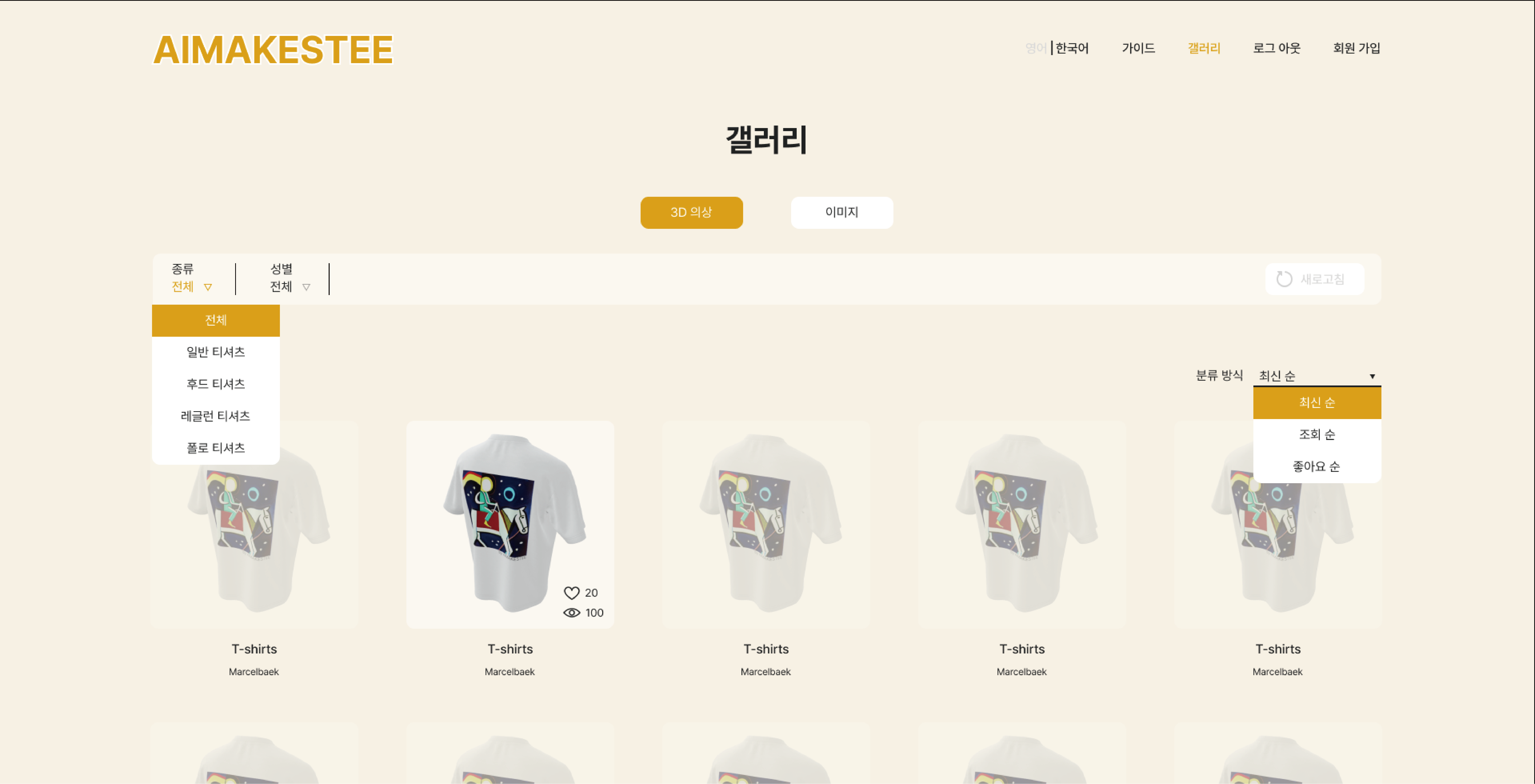Clothing design and production service using AI models
AIMAKESTEE is a service developed by integrating generative AI models into the T4U engine. Through this service, users can create their own images and use them in clothing design. Specifically, when a user enters a sentence(keyword), the AI automatically generates 10 images depicting it. Then, one of those images is used on the clothing. The procedure for using AIMAKESTEE consists of the following four steps.
Enter information to generate images
The prompt, composed of a keyword or a sentence, is input information that guides the AI model on what kind of image to create. The prompt is made up of five sections(object, description of the object, artist, genre, and tone). Users fill in the desired value for each part by either entering or selecting. If the editing function is turned ON, unwanted parts can be excluded.
In the first step, when you press the ‘Generate’ button, the AI draws 10 images that describe the entered prompt. During this process, a loading page appears. Afterward, the 10 images drawn by the AI are displayed, and users can choose one from them.
Setting the design
Design setting feature
After selecting an image on the second step, users can configure various design elements for the 3D garment. Through the window on the left, they can set and arrange the type of garment, image, text, and embroidery.
Connecting to real production
On the right side of the third step, there is a button labeled ‘Produce.’ By clicking this button, users can get their designed 3D garment made into an actual piece of clothing through DTP printing and sewing processes.
01

Integrating AI model with garments
At AIMEKESTEE, we don’t just sop at having the AI model create images. By integrating this with garments, we enable users to design and produce garments through generative AI model.
02

Offering prompt for Korean
In traditional generative AI models, only English words could be used in prompts. However, in AIMAKESTEE’s prompts, users can input in Korean, and the grammatical structure of the prompt is more aligned with the Korean language.
Contact us

